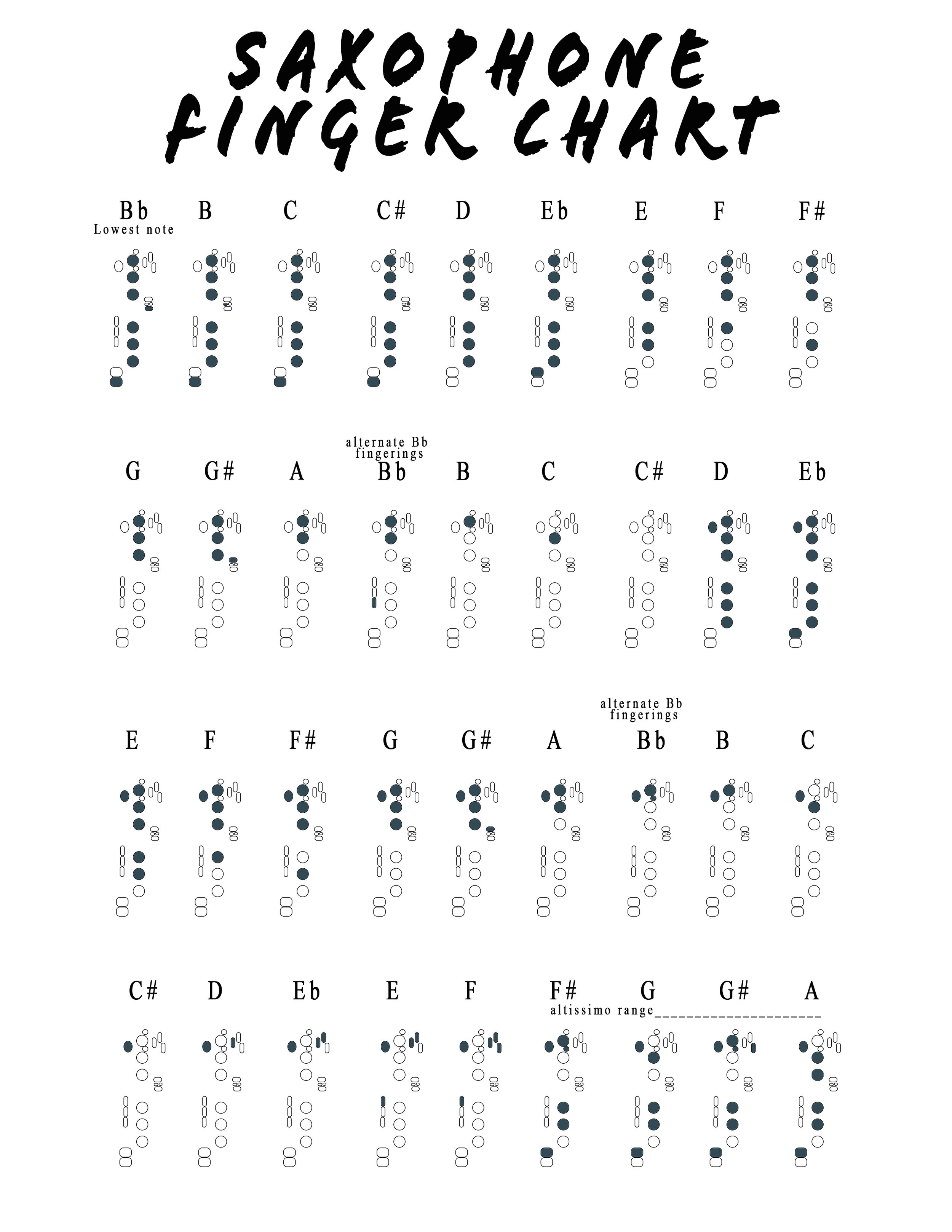Use this chart to learn the notes on the saxophone. The notes go from lowest to highest. These fingerings work on all saxophones (soprano, alto, tenor, and baritone). And remember that saxophones are “transposing” instruments, so adjust accordingly if you want to determine the concert pitch tones.
Q) What is a transposing instrument?
A) A transposing instrument is an instrument whose notes are different from those on a piano. The notes on a piano are in concert pitch. The notes on a transposing instrument are all shifted by an interval. For Bb instruments (tenor sax, trumpet, clarinet), it means that playing a C on that instrument is actually a Bb in concert pitch. For Eb instruments (alto and baritone sax), it means that playing a C on those instruments is actually an Eb on piano.
Q) How do I determine the concert pitch note on a transposing instrument and visa versa?
A) Every transposing instrument has a pitch assigned to it, for example tenor sax is a Bb transposing instrument. These transposing pitches are in relation to concert C. So since Bb is a whole tone down from C, you can deduce that the concert pitch will be a whole tone lower than any note that you play on tenors sax. For example, F on tenor sax is an Eb on piano, and B on tenor sax is an A on piano. If we look at Eb instruments and apply the same logic: Eb is 3 semi-tones higher than C, so an F# on alto sax will actually be 3 semi-tones higher in concert pitch, which will be concert A.
Happy practicing!

